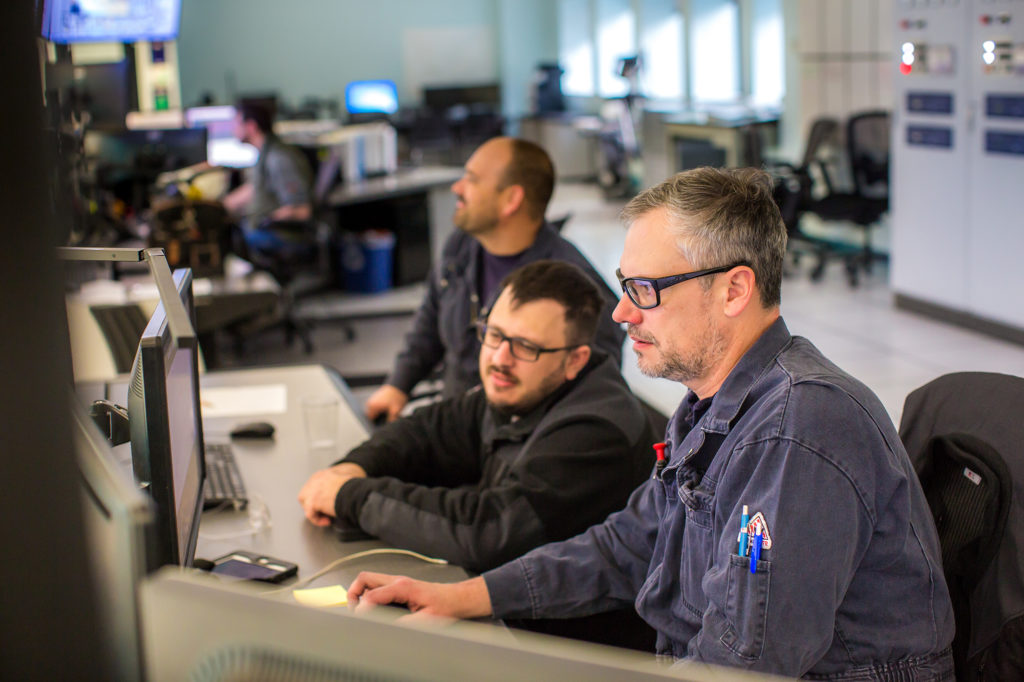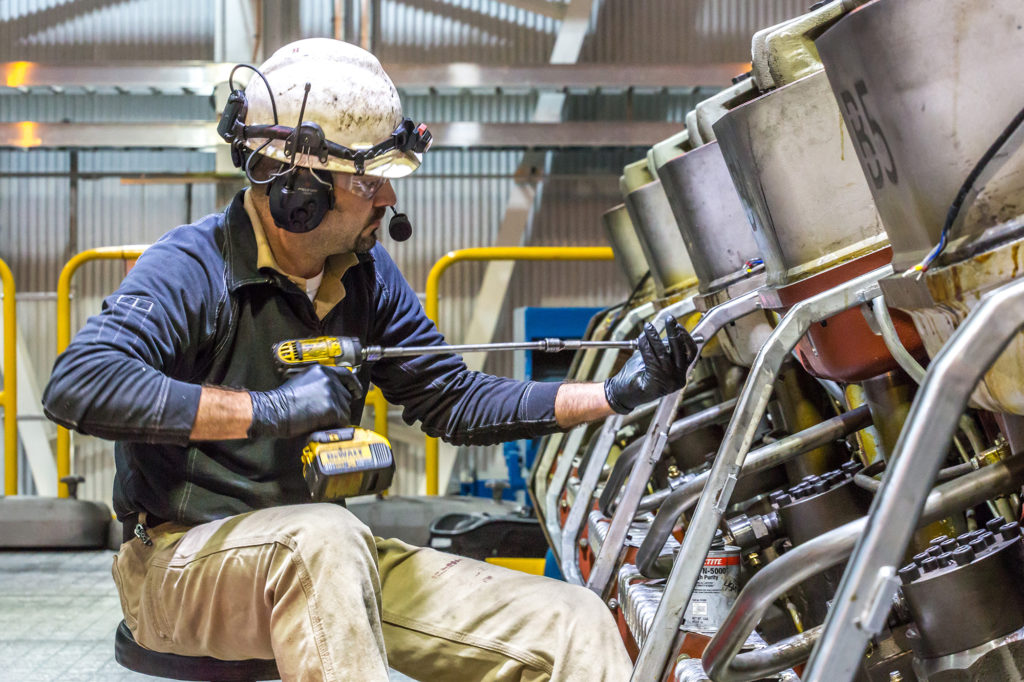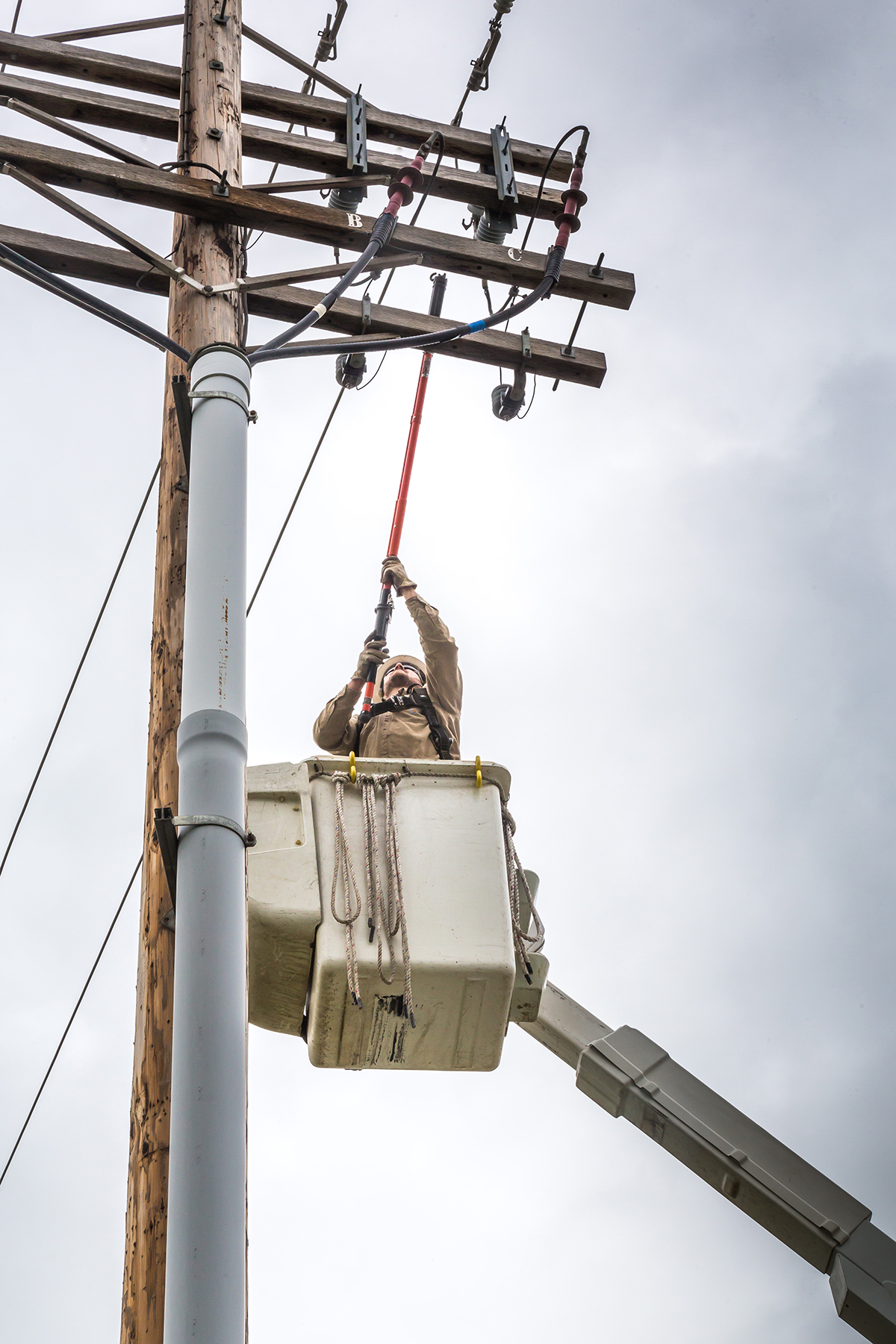
The shaking in an Anchorage conference room began at 8:29 a.m., and when it ended 30 seconds later, Tony Izzo’s thoughts were on Palmer, Alaska—43 miles away.
“I found myself on the wrong side of closed bridges and snarled traffic from our headquarters and our members,” said Izzo, general manager of Matanuska Electric Association. The magnitude-7.0 earthquake that shook southeastern Alaska on Nov. 30 immediately knocked 16 of the co-op’s 22 substations offline, disrupting service to 75 percent of its meters.
That began the first in a series of regular telephone check-ins with members of the co-op’s executive staff, who were already working on plans to get service restored. But in the immediate aftermath, the top priority was making sure everyone was safe.
Putting People First
“We evacuated the building and completed a preliminary damage assessment,” said Izzo. “We sent all non-essential personnel home to check with their families and assess the damage to their own homes.”
Many returned to work to provide support.
For a co-op serving 65,000 meters, sudden and unexpected interruptions of power can be routine, said Izzo, but “the scope of this problem was much larger than any other day at the office.”
Within 10 minutes, MEA technicians at the co-op’s Eklutna Generation Station reported limited damage to pipes connected to the plant’s fire-suppression system. Commissioned in 2015, the 171-megawatt plant was designed to withstand geologic events, common to the region, and it was fully operational.
But with so many substations down, power dispatchers worked to manage load loss and resulting voltage fluctuations. They also contacted the other three co-ops and two municipal utilities on the interconnected Alaska Railbelt system to coordinate load restoration efforts.
“Our load is relatively small with a narrow voltage threshold, so any issue on the system requires careful management,” said Izzo. “We were able to stabilize and maintain our system and then the larger grid in partnership with our neighboring utilities once interconnect was established.”
With control room monitors showing 16 substations offline, site inspections were needed, so technicians were dispatched.

Working Through Barriers
“I don’t have 16 people that all do substation assessment,” said Ed Jenkin, Matanuska EA’s director of power delivery, adding that some facilities were more than 25 miles away. That required available staff to visit multiple locations.
“We had to roll through the system,” he said. “We had transmission line trips, and based upon the relaying, we were able to just do quick inspections of those and bring them back online.”
Two substations were returned to service within two hours, and a third was back online about 90 minutes later, but 42,600 of Matanuska EA’s meters were still without power. As midday temperatures hovered near 25 degrees in Alaska’s late autumn darkness, four substations needed more extensive repairs.
Portions of area roads collapsed and were impassable, forcing crews and contractors to improvise.
“State police closed the highway, and there was about a 12-mile backup between Palmer and Eagle River,” said Steve Kozlowski the co-op’s technical services manager. Kozlowski was headed to the Eagle River substation to oversee repairs moments after getting back to the co-op’s headquarters after checking on his family.
“I saw a state trooper and asked him how I could drive to Eagle River, about 25 miles away,” said Kozlowski. “I asked if I could drive down the outbound lane on the shoulder with my flashers on? And he said, ‘Yeah, nobody’s going to stop you.’”
As contractors headed to the same substation from Wasilla, Kozlowski stayed in contact with co-op dispatchers. At the substation, he quickly saw that the tremor had shaken some substation components apart, broken connectors, shattered insulators, and other fixtures were strewn across the grounds.
“We had some parts in our headquarters yard, so I relayed that information to one of my substation technicians who was just coming off of another location,” said Kozlowski.
The technician worked with Matanuska EA’s warehouse crew to locate the necessary equipment, and it was driven out to the substation.
“We had boom trucks, welders, and a bucket truck in the substation, and so with the help of contractors, we simultaneously made repairs to the circuit switcher and other equipment,” Kozlowski said.
Other crews were busy repairing damage at two other substations. By 5 p.m., only 2,500 members were without service, power had been rerouted to all substations, and repairs continuing at one site were wrapped up by 10:30 p.m.
Several other co-ops and municipal utilities operating in the region offered mutual aid crews to help repair damaged lines and service entrances to restore power to smaller groups of members.
“We understand the growing dependence on electricity for safety, comfort and connection,” said Izzo. “We were bringing lights back on for our families and neighbors.”
Keeping Members Informed
Throughout the restoration and repair efforts, the co-op’s member communications personnel were busy keeping members informed.
“We were proactive to ensure our members received accurate information directly from us before misinformation and rumors had the chance to spread through other channels,” said Izzo. “We utilized our website and social media channels for quick updates as information became available and then also reached out to local media.”
A short video was quickly produced to help assure members that repairs were in progress and to let them know what to expect during the process. Resources were dedicated to quickly responding to members seeking information on the co-op’s social media pages.
Public safety and service information was also relayed to help keep members informed of relief efforts mounted by local and state agencies, said Izzo. “Our entire service area was impacted, and we understood our members needed to know what was going on and that MEA was part of the team trying to piece the community back together.”
The co-op’s efforts drew extensive praise from members and local and state officials. In December, the local newspaper, the Mat-Su Valley Frontiersman, honored all 195 Matanuska Electric Association staffers with its Frontiersman Person(s) of the Year award. The commendation recognizes individuals and institutions for outstanding service to Matanuska area communities.
“There were no major injuries or deaths resulting from the earthquake,” said Dennis Anderson, the newspaper’s publisher. “There was initially panic in the community as lines at the working gas pumps and the grocery stores became overwhelming. The panic subsided quickly as power was restored.”
Anderson went on to describe MEA’s responsiveness and ongoing commitment to service reliability as hallmarks of their relationships with members, noting that his editorial board unanimously supported honoring the co-op staff.
“The days, months and years leading up to the earthquake and the work MEA put into the infrastructure of the power grid plus the sacrifice made by their employees made them an overwhelming choice,” said Anderson.
Derrill Holly is a staff writer at NRECA.
